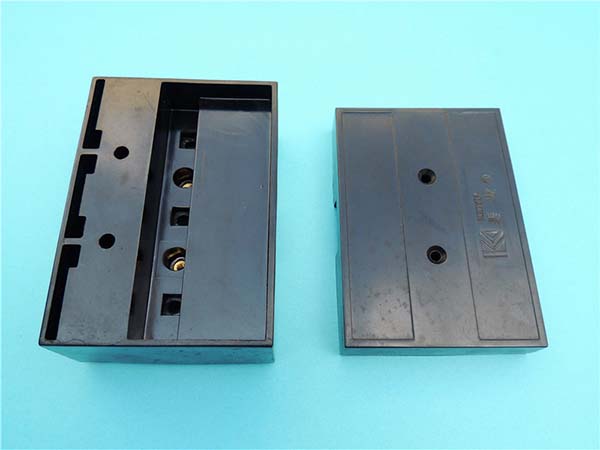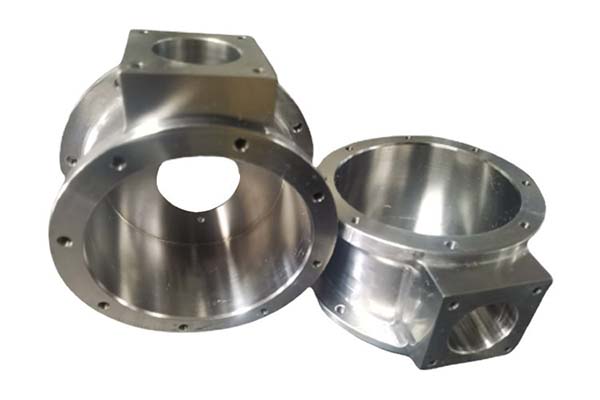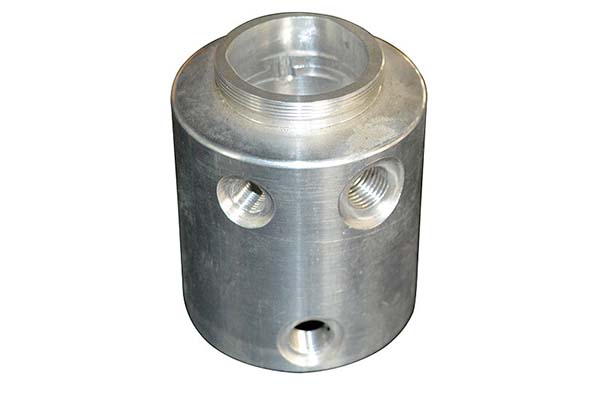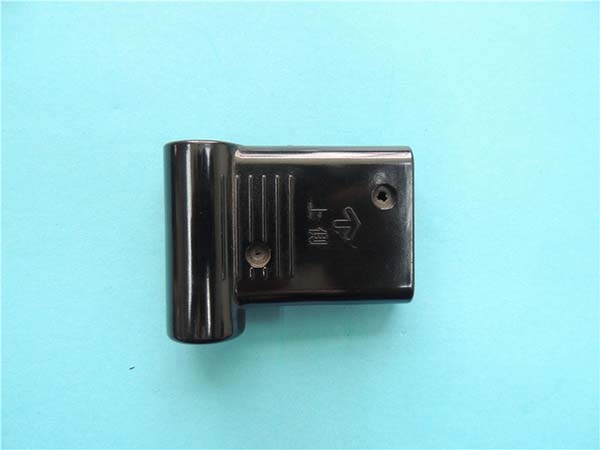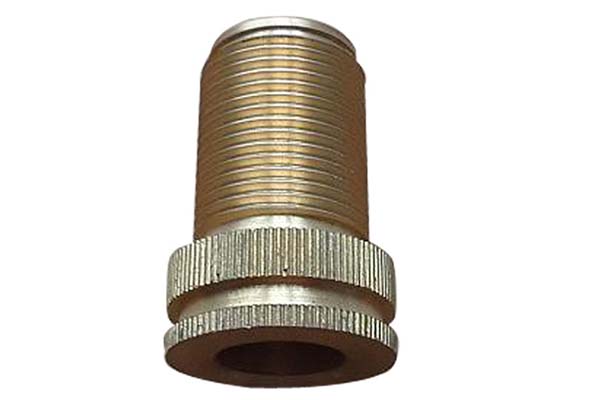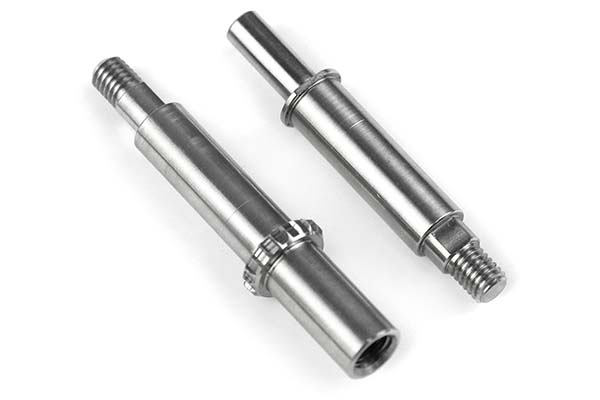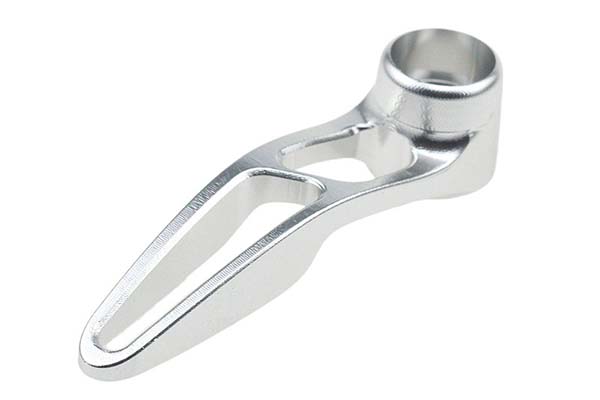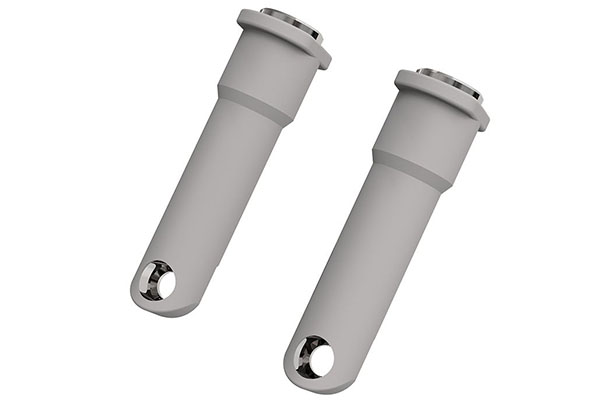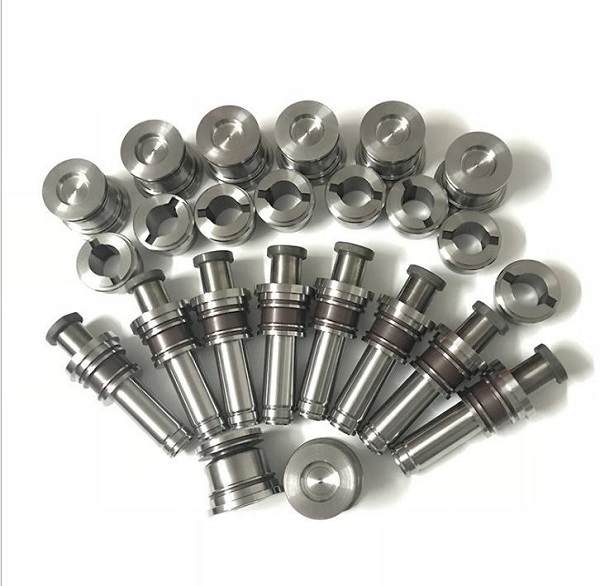CNC machining of Nylon 20%GF (20% glass fiber reinforced nylon) strikes a unique balance between performance and processability, but it still presents distinct challenges. Compared to unfilled nylon, the glass fibers increase abrasiveness, leading to faster tool wear, while the lower fiber content than Nylon 30%GF means different machining strategies are needed to avoid surface defects like fiber pull-out. Manufacturers often struggle to find the right tooling and parameters that balance material removal rates with tool longevity. This guide addresses these pain points, offering expert insights to master Nylon 20%GF machining.
Material Properties
Nylon 20% GF composition blends nylon resin with 20% glass fibers, resulting in a material that enhances key properties without sacrificing too much machinability. Its mechanical properties are impressive: a tensile strength of 90-110 MPa, significantly higher than unfilled nylon (45-60 MPa) but slightly lower than Nylon 30%GF, making it ideal for medium-to-heavy load applications.
The flexural modulus of Nylon 20%GF ranges from 3500-4500 MPa, providing rigidity for structural parts while remaining more impact-resistant than higher fiber content grades. Its impact strength (15-20 kJ/m²) is notably higher than Nylon 30%GF, reducing the risk of cracking during machining and assembly.
In terms of thermal stability, it withstands continuous temperatures of 110-130°C, suitable for under-hood automotive components and industrial machinery. Chemical resistance mirrors other nylons, withstanding oils, greases, and alkalis but not strong acids or oxidizing agents.
Dimensional stability is excellent due to reduced moisture absorption (1-1.5%), much lower than unfilled nylon (2-3%) and slightly higher than Nylon 30%GF. This makes it predictable in humid environments, a key advantage for precision parts. Its density is 1.18-1.20 g/cm³, balancing strength and weight for lightweight applications.
| Property | Nylon 20%GF | Nylon 30%GF | Unfilled Nylon PA6 |
| Tensile Strength | 90-110 MPa | 120-140 MPa | 45-60 MPa |
| Impact Strength | 15-20 kJ/m² | 10-15 kJ/m² | 30-40 kJ/m² |
| Moisture Absorption | 1-1.5% | 0.5-1% | 2-3% |
| Flexural Modulus | 3500-4500 MPa | 5000-6000 MPa | 2800-3200 MPa |
Machining Processes
CNC milling of Nylon 20%GF is highly effective for creating complex shapes, with 3-axis mills handling most parts and 5-axis mills reserved for intricate geometries. Spindle power of 15-20 kW is sufficient, as the lower fiber content reduces cutting forces compared to Nylon 30%GF.
CNC turning works well for cylindrical parts like bushings and shafts, with a focus on maintaining consistent spindle speeds to avoid heat buildup. Typical speeds range from 1000-2000 RPM, higher than Nylon 30%GF but lower than unfilled nylon, balancing tool life and surface quality.
Drilling Nylon 20%GF requires sharp tools to prevent fiber pull-out, with feed rates of 0.1-0.15 mm/rev ensuring clean holes. Tapping and reaming are straightforward due to the material’s balanced rigidity and toughness, though using coated tools helps maintain thread quality.
Coolant usage is recommended but not as critical as with higher fiber grades. A water-soluble coolant (5-8% concentration) dissipates heat and flushes away glass fiber chips, reducing tool wear and surface defects. Thread cutting benefits from slower feed rates (0.08-0.1 mm/rev) to ensure precise, burr-free threads.
Tool Selection
Choosing the right tools for Nylon 20%GF machining is key to balancing performance and cost, given its moderate abrasiveness:
- Cutting tools for Nylon 20% GF primarily include carbide tools (grade K20 or K30), which offer longer life than HSS tools without the high cost of the ultra-hard carbides needed for Nylon 30%GF. Tool life is 30-40% longer than Nylon 30%GF, making carbide a cost-effective choice.
- HSS tools can be used for low-volume, low-precision parts, though they require more frequent sharpening than with unfilled nylon.
- Tool geometry should feature a sharp cutting edge (radius <0.02 mm) to minimize fiber pull-out, with a helix angle of 35-40° for end mills—steeper than unfilled nylon but less aggressive than Nylon 30%GF requirements.
- Flute count varies by application: 2-flute end mills for better chip evacuation, 4-flute for finer surface finishes.
- Tool coatings like TiN (titanium nitride) extend tool life by 20-30% compared to uncoated carbide, reducing friction and heat buildup.
- Edge preparation with a slight hone (0.01-0.02 mm) prevents chipping, especially during heavy cuts, balancing sharpness and durability.
Surface Finish
Nylon 20%GF achieves a surface roughness of Ra 0.8-1.2 μm with proper machining, smoother than Nylon 30%GF but slightly rougher than unfilled nylon due to the glass fibers. Achieving this requires:
- Sharp carbide tools with TiN coatings to minimize fiber pull-out.
- Consistent feed rates (0.1-0.12 mm/tooth) during finishing passes, faster than Nylon 30%GF but slower than unfilled nylon.
Surface defects like fiber pull-out or fuzzing are less common than with higher fiber grades but can occur with dull tools or excessive feed rates. Polishing techniques such as light sanding with 600-800 grit sandpaper improve finishes to Ra 0.4-0.6 μm for aesthetic applications.
Post-machining treatments are minimal due to the material’s good as-machined finish:
- Deburring with abrasive brushes removes sharp edges, critical for safety in consumer goods.
- Annealing at 90-100°C for 1-2 hours relieves internal stresses, reducing post-machining warping in large parts.
- Finish quality meets most industrial standards without additional treatments, though aesthetic requirements may demand polishing or painting.
Applications
CNC machined Nylon 20%GF parts excel in applications requiring a balance of strength, impact resistance, and machinability:
- Automotive components: Steering system parts, sensor housings, and interior trim benefit from its strength and temperature resistance.
- Electrical insulators: Terminal blocks and motor components leverage its electrical insulation properties in medium-temperature environments.
- Mechanical parts: Gears, pulleys, and bearing retainers withstand moderate loads without excessive weight.
- Consumer goods: Power tool housings, appliance components, and sports equipment use its impact resistance and aesthetic potential.
- Industrial equipment: Conveyor guides, pump impellers, and valve parts balance wear resistance with processability.
- Prototyping: Its machinability makes it ideal for functional prototypes, allowing designers to test form and fit before scaling to production.
- Custom machined parts: Low-to-medium volume custom components benefit from its predictable machining behavior and consistent quality.
- Injection mold inserts: Its dimensional stability and moderate heat resistance make it suitable for short-run mold components.
Yigu Technology's Perspective
Yigu Technology specializes in CNC machining Nylon 20%GF, leveraging its balanced properties to deliver high-quality parts. We use a combination of TiN-coated carbide tools and optimized parameters to balance tool life and surface finish, ensuring cost-effectiveness for both low and medium volumes. Our process controls focus on consistent feed rates and coolant usage to prevent surface defects, while our inspection protocols verify dimensional accuracy and finish quality. Whether producing automotive components or custom industrial parts, we tailor our approach to maximize Nylon 20%GF’s strengths, delivering reliable, precision-machined parts that meet our clients’ exact specifications.
FAQ
- How does machining Nylon 20%GF differ from Nylon 30%GF?
Nylon 20%GF requires less aggressive tooling (softer carbides, less steep helix angles) and can handle higher feed rates due to lower abrasiveness. It also has better impact resistance, reducing the risk of cracking during machining, and offers longer tool life.
- Can HSS tools be used for machining Nylon 20%GF?
HSS tools can be used for low-volume, low-precision parts, but they wear significantly faster than carbide tools. For most applications, carbide tools (especially coated ones) are more cost-effective due to longer life and better surface finishes.
- What causes surface defects in Nylon 20%GF, and how to prevent them?
Fiber pull-out and fuzzing are the main defects, caused by dull tools or excessive feed rates. Using sharp, coated carbide tools, maintaining optimal feed rates (0.1-0.12 mm/tooth), and using coolant to flush chips prevent these issues, ensuring a smooth surface finish.
